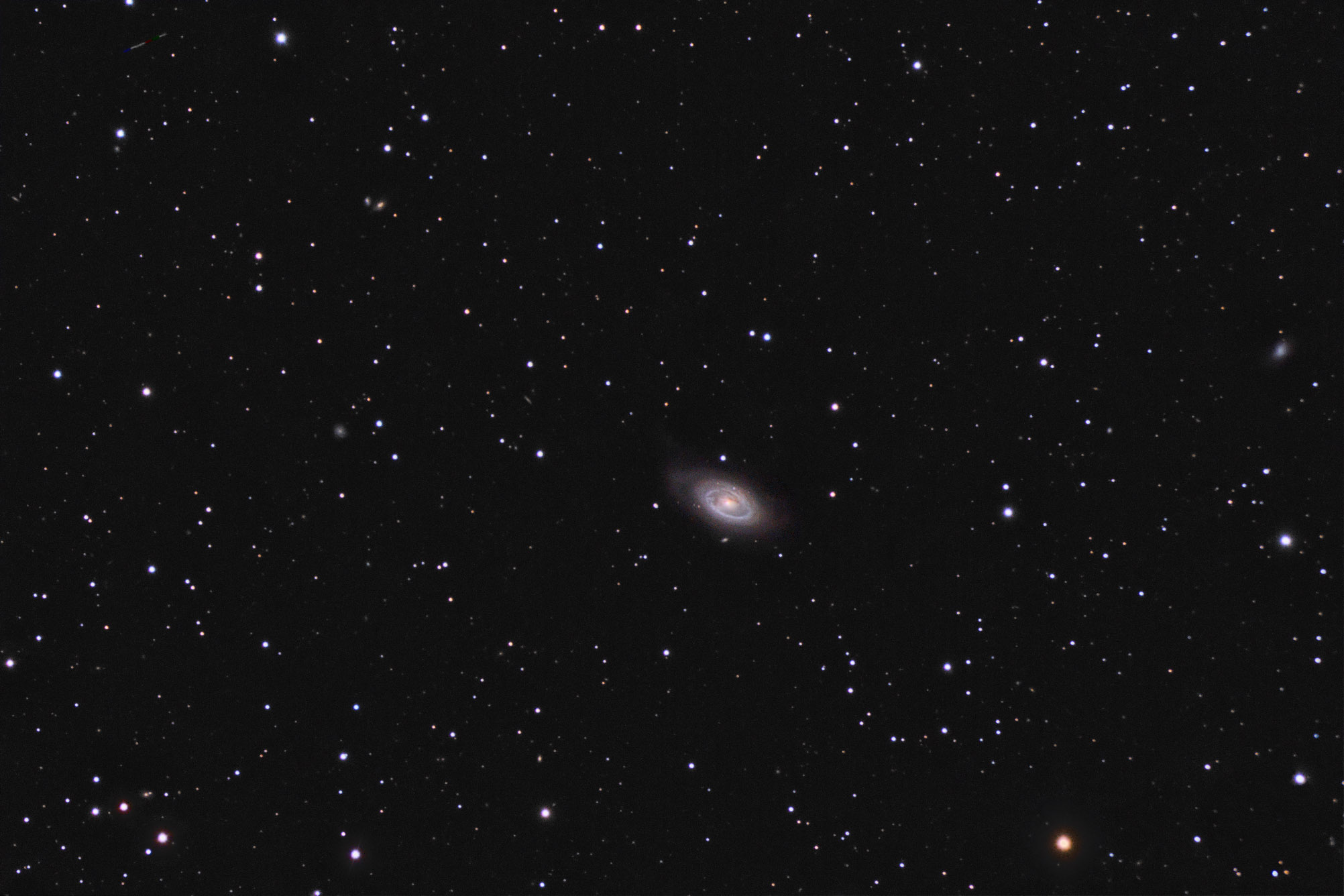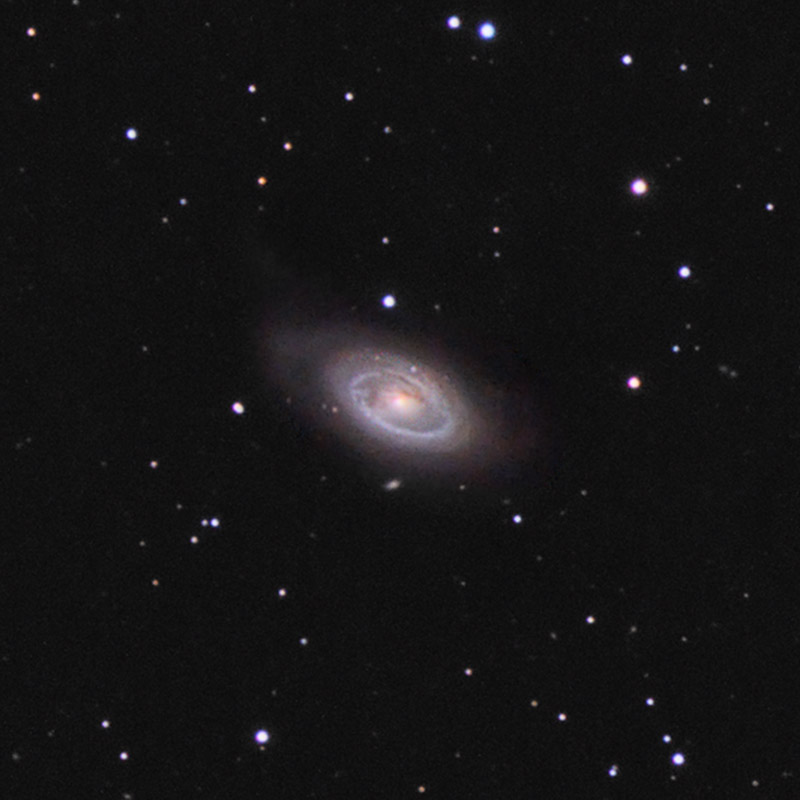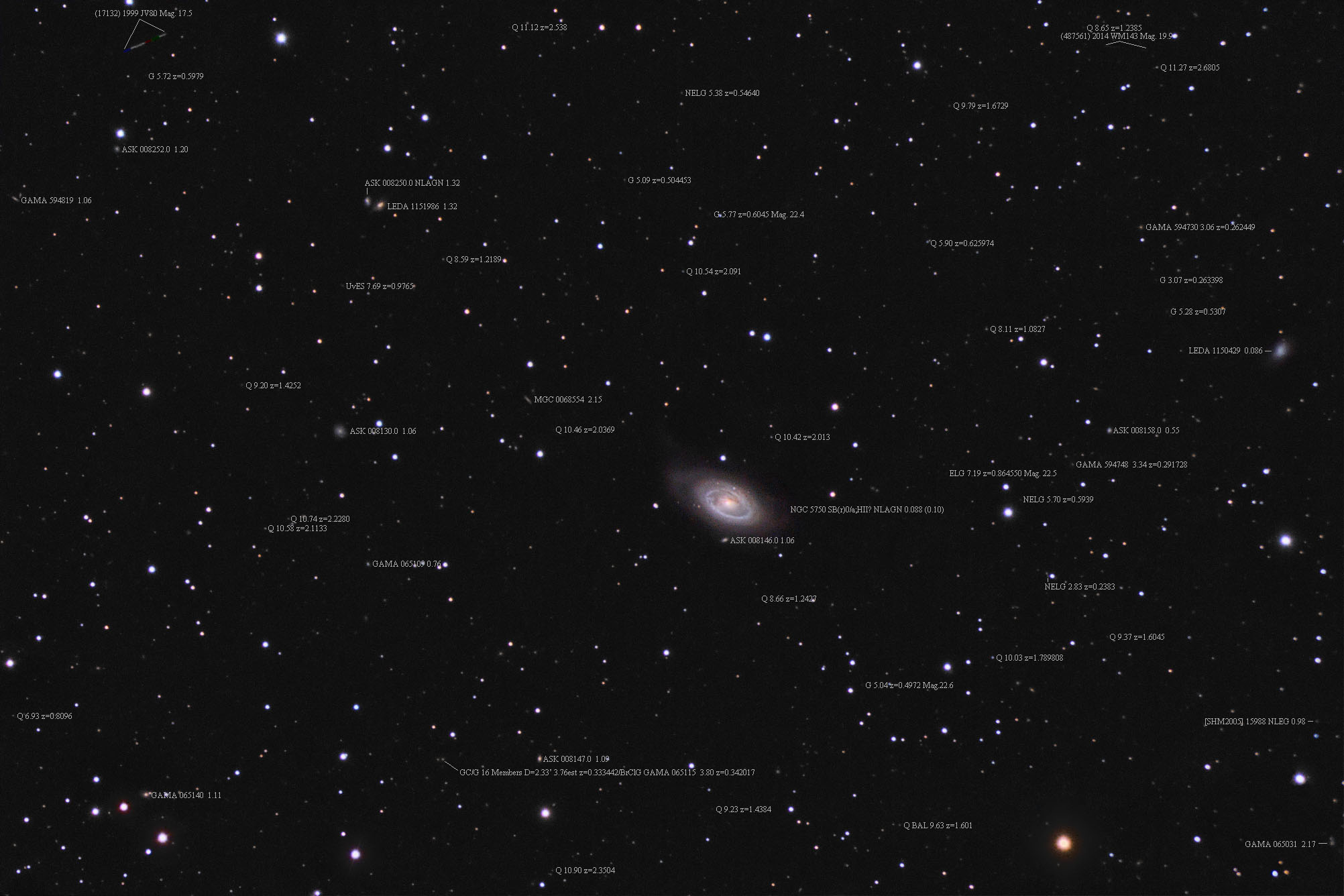| Description | Images |
Object name: NGC5750Designation(s): NGC5750, NGC 5750 is a ringed spiral galaxy with plumes in northwestern Virgo. Its distance depends on who you believe. NED's redshift data says about 88 million light-years. Others say up to 110,000 using non-redshift measurements. I'm going to round it to 100 million for measuring its size. Not counting the plumes I get a size of about 90,000 light-years which grows to 130,000 including the plumes, especially the one to the northeast. The galaxy is a barred spiral with arms coming off the bar that overlaps forming the ring-like structure. It also has some dust lanes that just aren't where you'd expect them to be. NED classifies it as a Narrow Line AGN while some others say Seyfert 2. In any case, it appears to have a rather actively feeding black hole at its core. The plumes and odd dust would argue this is due to a recent interaction or merger with another galaxy. Was LEDA 1150429 on the far right of my image the culprit? Its redshift is similar indicating it is likely part of the same group as NGC 5750. I found no classification for it. It does appear it could be rather disturbed and is quite blue indicating lots of current star formation is going on. Related Designation(s):2MASS J14461112-0013227, 2MASX J14461110-0013229, 2MASXi J1446110-001320, 6dF J1446111-001323, APMUKS(BJ) B144337.21-000044.9, ASK 008145.0, CGCG 020-013, CGCG 1443.7-0001, GAMA 065075, GAMA J144611.12-001322.6, GSC 4986 00735, H-ATLAS J144611.2-001324, HAPLESS 25, HDCE 0886 NED004, IRAS 14436-0000, IRAS F14436-0000, LDCE 1076 NED027, LGG 386:[G93] 012, LQAC 221-000 053, MCG +00-38-006, NGC 5750, NGC5750, NSA 165536, NVSS J144610-001315, PGC 052735, SDSS J144611.12-001322.5, SDSS J144611.12-001322.6, SDSS J144611.12-001322.8, SDSS J144611.13-001322.7, UGC 09512, USGC U648 NED01, UZC J144611.1-001325, [FNO2007] 1911, [VCV2006] J144611.2-001323, |


